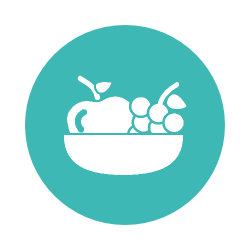ES|EN



Adrian
Adrian works as a loader in the street market. A loader or diablero is a person that vendors hire to load the merchandise from the hauliers’ trucks to the stalls. They are also hired to assemble the stalls and as vendors’ helpers during sale time. Adrian’s cousin Abel helped him to get a job there. Familial links are usually the main gate to access any kind of job in street markets, being this loader, vendor or helper. Adrián, as other diableros, own a trolley, popularly known as diablo. This is his main tool of work. He dedicates some time during the week to grease and paint his diablo. He also dedicates time to personalise it by writing jokes in the wooden table that covers the bottom of the trolley.
As a loader, Adrián is among the people that arrive the earliest to the street market. But it is also among the ones who leave the latest because part of his job is also to help vendors to disassemble stalls and take the remaining merchandise to the trucks. In this sense, diableros work along hauliers. Because Adrián and other diableros arrive very early in the morning, they usually recover some sleeping by sleeping under a stall, covered by the thick plastic tablecloth, in the late morning, usually between 10am-12pm. However this depends on the work available. A vendor might offer a loader a job for the day as helper, which requires assisting customers and other secondary task. On Tuesdays, Adrián sometimes work in the aisles offering slices of papaya to customers. On Mondays sometimes he works for Gabriel in producing fresh pineapple and orange juice. Usually on Sundays Adrián is in charge of a watermelon stall and sometimes his partner, a Salvadorian woman that recently migrated with her adolescent daughter to Mexico City, assists him.
These kinds of jobs help loaders like Adrián to earn extra money, given that loading is the most unstable job in the street market.
They usually establish certain links with vendors that allow them to be “regular” loaders for them. However, the lack of contract
and the dependency on the vendors’ attendance to a market spot in a given day makes the job quite fluctuant.
This is in part one reason Adrián had decided to migrate to the US in the past. One day Adrián was playing with a very small lamp in the shape of a cigarette. I asked him about it. He replied:
“I collect little lanterns because they have brought me luck. I was carrying a little lantern like this hanging on my neck when I was crossing the border. It was a gift and I took it with me. One night the coyote was guiding us through the dessert. But it was very very dark. You weren’t able to see your own hand in front of you. At one point the coyote jump to what it seemed to be a small cliff. But because it was dark, people following him weren’t able to calculate their jumps, as the coyote did, because he already knew the path. I could hear ‘ouch, ouch!’ from the first persons that jumped. So I remembered my little lamp, I turned it on and I could see the bottom of the cliff and jump more securely. Later on, even the coyote asked me for it to illuminate our way through a small tunnel. Since then I try to collect this kind of little lanterns.”
He has crossed the Mexican/US border through the dessert three times. Once there, he works for a while, usually during harvest time, saves money and then goes back to Mexico.
My first conversation with Adrián was about his tattoos. Adrián has more than six tattoos in his body, most of them are family names: his children’s names and his mother’s name who passed away a while ago. However, a tattoo in particular told a different story. A cobra covers a good part of his stomach. This design was the most adequate he found to cover the long stab wound on his stomach inflicted by a flatmate. Adrián thought we would die that day. But five days after being stabbed, he was working again. After some time he decided to get the tattoo. The tattoo artist did it in one session after Adrian decided that he could handle the pain:
“The stab didn't really hurt. I have never had pain because of the wound, not even when loading heavy merchandise. The tattoo was more painful; but I didn't mind to bear the pain until it was finished”.
His tattoo is a wound to heal other wound. Tattoos can help to synthesize and process traumatic events at individual and social levels. Through marking his body at the trauma site and enduring five hours of pain under the needle, Adrian was able to come to terms with his physical injury and obtain a sense of control. The tattoo embellished what he calls “the ugly wound” with another more socially accepted wound. Through the tattoo Adrian negotiates both his scar and memories with himself and others.

